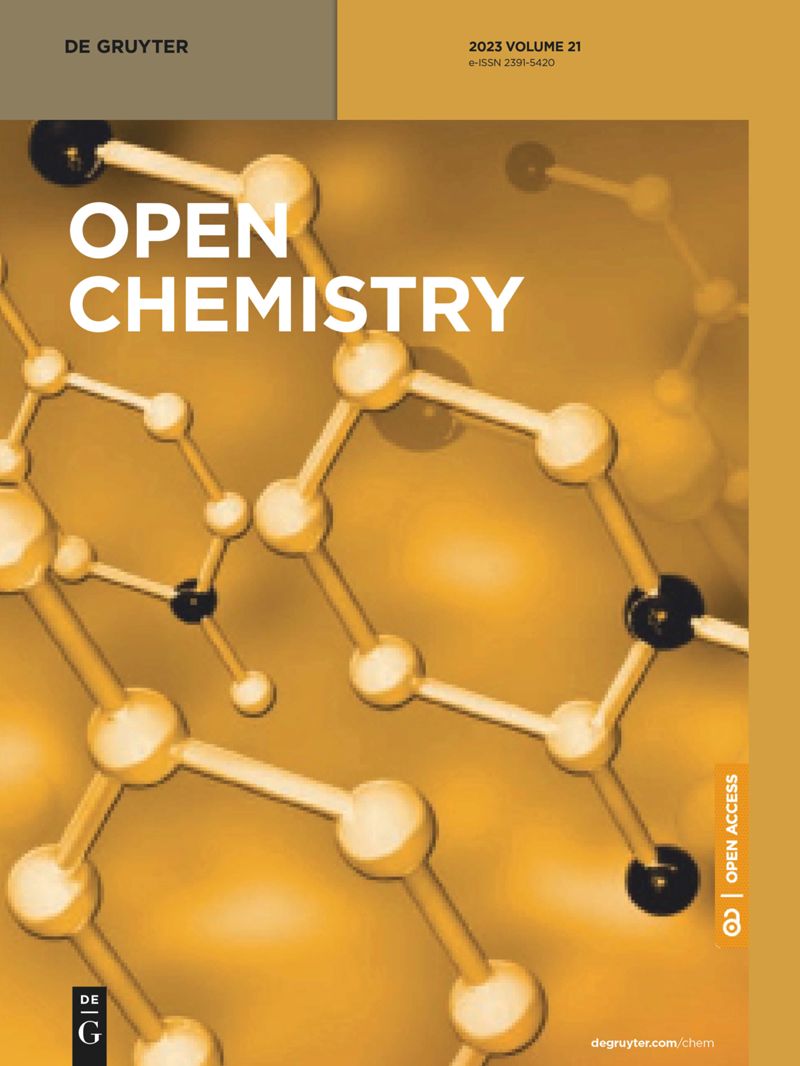测定圣约翰草的精油和化学成分
IF 2.1
4区 化学
Q3 CHEMISTRY, MULTIDISCIPLINARY
引用次数: 0
摘要
考虑到圣约翰草(Hypericum perforatum L.)含有多种生理活性化合物,包括类黄酮、常见酚类和精油(EOs),它是保加利亚的一种常见植物,主要用于治疗各种疾病。本次调查的目的是确定从保加利亚北部采集的圣约翰草花序的化学成分。通过对甲醇提取物进行 1,1-二苯基-2-苦基肼(DPPH)、铁还原抗氧化能力(FRAP)和 Trolox 当量抗氧化能力(TEAC)测试,评估了 H. perforatum L. 提取物的抗氧化活性。水蒸馏得到的环氧乙烷含量为 0.08%,其主要成分(超过 3%)为正壬烷(27.46%)、β-鞘氨醇 (11.17%)、庚醛二甲基缩醛 (5.94%)、乙基己基甲酮 (5.93%)、十一烷 (3.75%)、沙比利烯 (3.3%) 和十三醇 (3.1%)。从花序中提取甲醇,测定总黄酮含量为 8.66 毫克槲皮素当量(QE)/毫克,总酚含量为 271.33 毫克没食子酸当量/克。FRAP 法测定的抗氧化活性为 493.07 µmol/L,而 TEAC 法测定的抗氧化活性为 106.39 µmol/L。我们的研究结果有助于全面描述保加利亚穿孔草的特征,并评估其油在潜在工业应用中的适用性。此外,这些结果还能为今后有针对性的育种工作选择标本提供指导。本文章由计算机程序翻译,如有差异,请以英文原文为准。
Determination of essential oil and chemical composition of St. John’s Wort
Considering it contains a variety of physiologically active compounds, including flavonoids, common phenols, and essential oils (EOs), St. John’s wort (Hypericum perforatum L.) is a common plant in Bulgaria that is predominantly used in folk medicine to cure various disorders. Determining the chemical makeup of St. John’s wort inflorescences that were gathered from northern Bulgaria was the purpose of this investigation. The antioxidant activity of H. perforatum L. extracts was assessed using 1,1-diphenyl-2-picrilhydrazyl (DPPH), ferric reducing antioxidant power (FRAP), and Trolox equivalent antioxidant capacity (TEAC) tests on methanol extract. The amount of EO obtained by water distillation was 0.08%, with its main components (over 3%) being n -nonane (27.46%), β -sesquiphellandrene (11.17%), heptanal dimethyl acetal (5.94%), ethyl hexyl ketone (5.93%), undecane (3.75%), sabinene (3.3%), and tridecyl alcohol (3.1%). Methanol extracts were obtained from the inflorescences, with the total flavonoid content determined as 8.66 mg quercetin equivalents (QE)/mg and total phenolic content as 271.33 mg Gallic acid equivalent/g. The FRAP assay yielded 493.07 µmol/L of antioxidant activity, while the TEAC assay yielded 106.39 µmol/L, respectively. Our findings enable a comprehensive characterization of H. perforatum from Bulgaria and an assessment of its oil suitability for potential industrial applications. Additionally, the results could guide the selection of specimens for future targeted breeding efforts.
求助全文
通过发布文献求助,成功后即可免费获取论文全文。
去求助
来源期刊

Open Chemistry
CHEMISTRY, MULTIDISCIPLINARY-
CiteScore
3.80
自引率
4.30%
发文量
90
审稿时长
6 weeks
期刊介绍:
Open Chemistry is a peer-reviewed, open access journal that publishes original research, reviews and short communications in the fields of chemistry in an ongoing way. The central goal is to provide a hub for researchers working across all subjects to present their discoveries, and to be a forum for the discussion of the important issues in the field. The journal is the premier source for cutting edge research in fundamental chemistry and it provides high quality peer review services for its authors across the world. Moreover, it allows for libraries everywhere to avoid subscribing to multiple local publications, and to receive instead all the necessary chemistry research from a single source available to the entire scientific community.
 求助内容:
求助内容: 应助结果提醒方式:
应助结果提醒方式:


